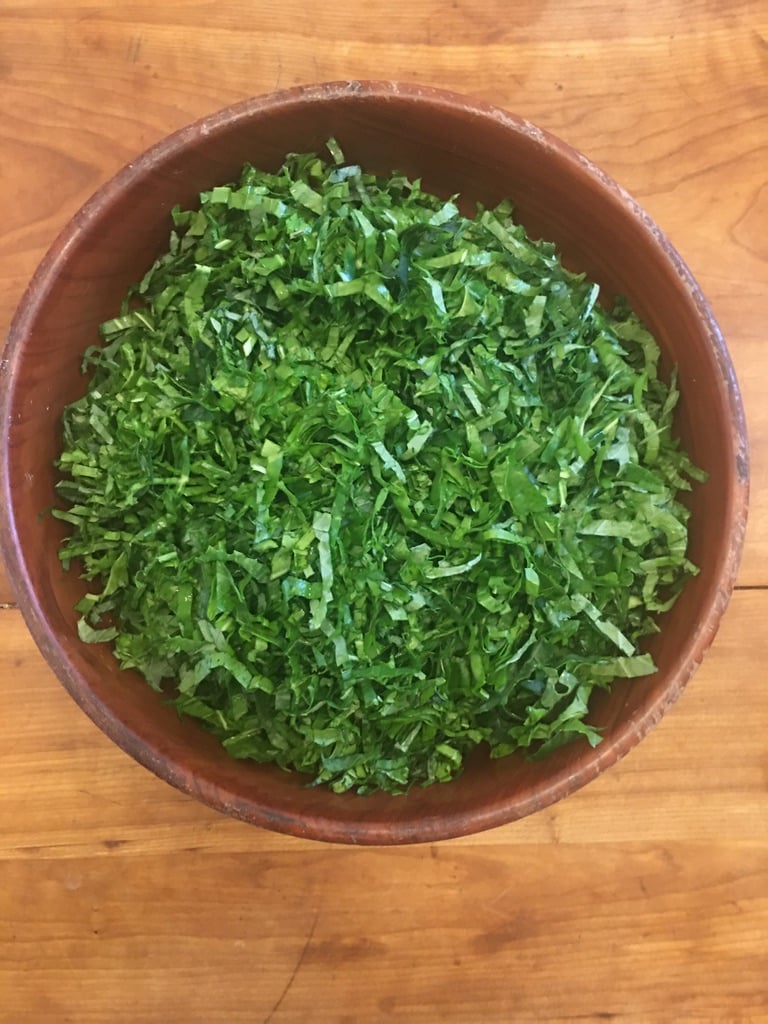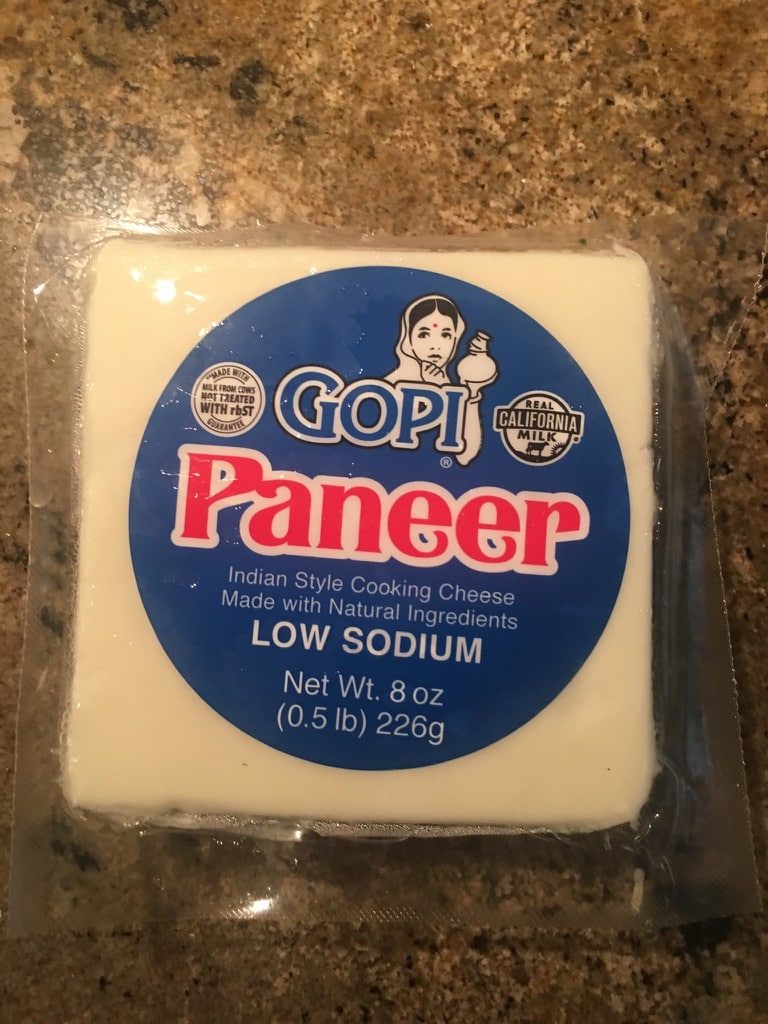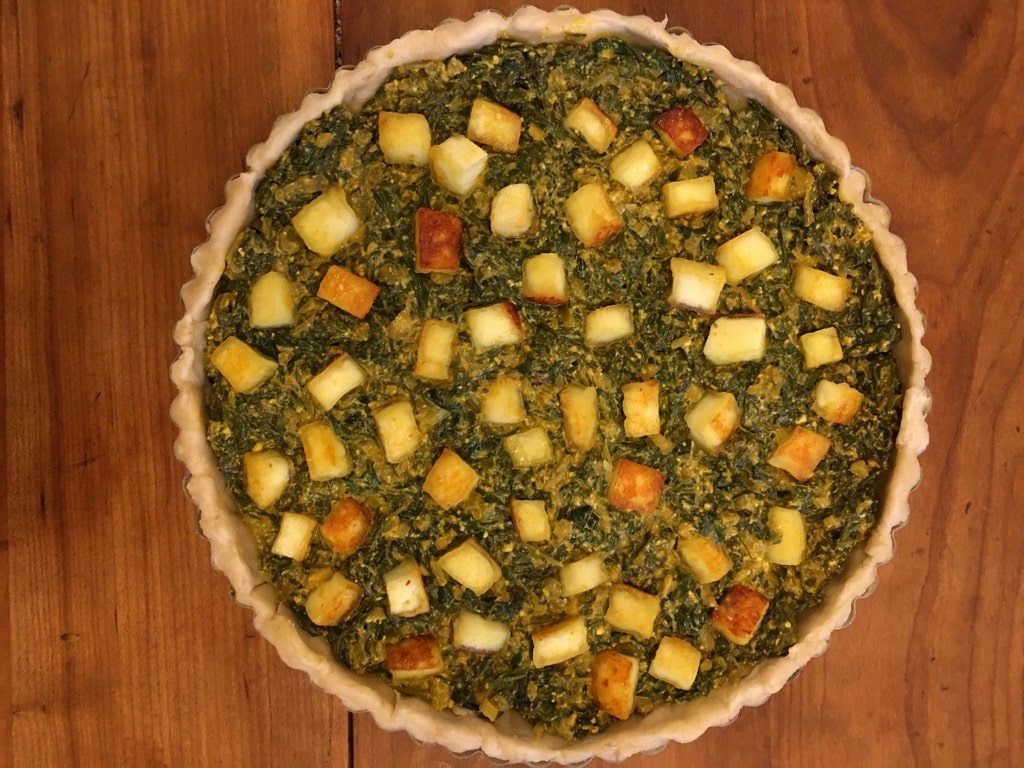Palak Paneer is a popular vegetarian dish originally from Northern India. It is a staple on the menu of Indian restaurants abroad. Its two main ingredients, palak (spinach) and paneer (a compact, mild, non-melting cow’s cheese), are cooked with various spices. The often-puréed cooked spinach gives the dish a smooth and silky texture, contrasting with the sautéed cubes of paneer, crispy on the outside and soft inside. Saag Paneer is the big sister recipe. It is more or less the same recipe but instead of palak, a wide range of leafy greens can be used depending on seasonal availability. Mustard greens and collard greens are common ingredients but kale, Swiss chard, beet leaves, arugula and also dandelion and watercress or even chrysanthemum leaves can be considered.

For quite some time, my spouse and I have been attempting to bridge our own culinary traditions, respectively French and Indian. The idea came about when my spouse suggested that we experiment with the texture, form and presentation of Indian dishes. Indian food is by default our everyday cuisine for it offers a wide range of vegetarian dishes. For me, it is also a constant source of exploration of the world of spices and legumes. I recall a casual dinner conversation that might have been the impetus for this experimentation. My spouse had been intrigued by a recipe, I believe by Ferran Adrià, then the pope of molecular gastronomy, which deconstructed the popular chicken tikka masala dish. This particular recipe epitomized the playful and infinite possibilities of 1990s gastronomic alchemy. In this new version the textures were reversed. The chicken became the sauce and the masala the solids. It got us thinking that this play on texture could be apply to other Indian dishes such as palak paneer.
Palak Paneer like many Indian dishes is served alongside rice or flatbread (roti, naan etc.), and more often than not in combination with other dishes. For many of us who enjoy Indian food but might not want to or cannot prepare an entire Indian meal, a Palak Paneer quiche satisfies two requirements. First the dish retains the traditional ingredients of the Indian recipe, and second its firmer and drier structure turns (the traditional recipe is wet, think thick potage) turns it into a stand-alone dish that can be served as an appetizer or a main course. The crust replaces the rice.
If you don’t have access to paneer, other non-melting cheeses such as queso fresco, queso blanco or halloumi are great substitutes. For those who are cutting down on dairy products or would like to make a vegan version, a firm tofu also works very well. The spice level can also be modulated to your taste. You can make the quiche filling as mild or spicy as you like. If you make your own quiche dough, you can throw in a teaspoon of dry roasted cumin, powdered or whole seeds, with the flour to add extra zing to the crust.

The only real challenge is to make the filling fairly dry and compact by not pureeing the spinach and by not adding cream to the mixture like in the traditional recipe at this stage of the preparation. ![]()
